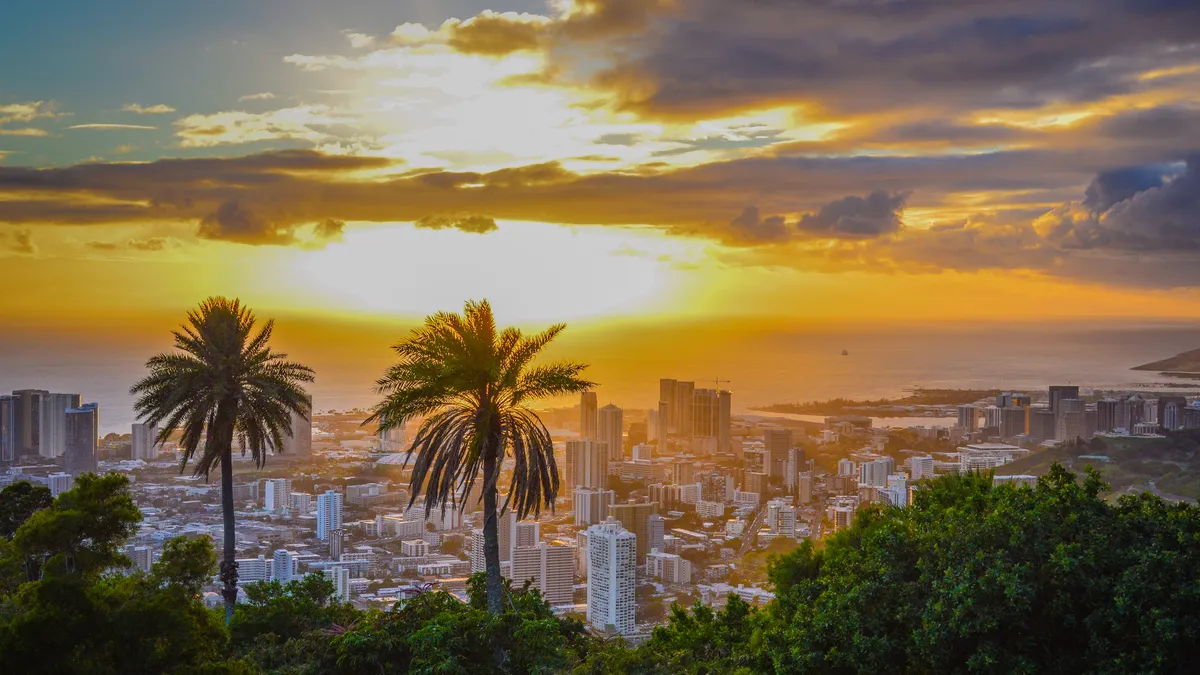Dive Brief:
- Hawaiian Electric Co. is taking a closer look at its capacity planning and energy reserve margin on the island of Maui amid concerns that it might not be able to acquire a guaranteed supply of parts for four units of the mostly oil-fired Maalaea power plant facility, the utility told regulators in a letter this week.
- A subsidiary of Mitsubishi Heavy Industries Engine & Turbocharger (MHIET), the supplier of the parts, recently informed the utility that "some engine-related parts might no longer be available for supply due to the business closing at our suppliers," and that if there is no alternative way to produce the parts anymore, it will officially inform the utility in a response to a formal request for quotes.
- Hawaiian Electric has identified a portfolio of measures — including the creation of a battery bonus program, and soliciting proposals for additional grid resources that can be in place by 2027 — which it believes will ensure that Maui residents continue to receive reliable electric service, Rebecca Dayhuff Matsushima, its vice president of resource procurement, said in an email.
Dive Insight:
"The broader context for what's going on in Hawaii is Oahu and Maui are both in a position of having possible energy shortages in the next year or two," according to Kylie Wager Cruz, senior attorney with the Mid-Pacific office of Earthjustice.
Simultaneously, "it seems like the global supply-chain issues continue to be a problem that threaten timely installation of projects," she said.
Hawaiian Electric is moving quickly to replace a 180-MW AES coal plant on Oahu, scheduled to retire this fall, with a set of renewable and storage projects. The plant currently serves around 15% of demand on the island, and regulators have voiced concerns that delays to the replacement projects could pose a threat to grid reliability.
The utility has heard from several developers that the global supply-chain crisis could delay renewable energy projects on Oahu and Maui due to battery-related production delays, shipping delays, and the rising costs of materials and labor, Dayhuff Matsushima said.
"However, we've been working closely with developers to ensure these projects continue to move forward," she added.
For instance, the 39-MW Mililani I solar and storage project on Oahu has been constructed and is expected to come online this July, according to Dayhuff Matsushima. Another 36-MW solar-plus-storage project, and a 12.5-MW AES West Oahu facility, are also slated to reach commercial operations by the end of the year.
In light of global supply chain constraints, Hawaiian Electric has been reaching out to its suppliers to get a better understanding of the availability of the spare parts it needs for its facilities, as well as sometimes procuring those parts ahead of schedule.
But when the utility got in touch with MHIET regarding procuring spare parts for Maalaea Units 10 through 13, it received a response from the company's Chicago office that stated that "some engine-related parts might no longer be available for supply due to the business closing at our suppliers and if there is no alternative way to produce parts anymore."
There are 22 units at Maalaea, with a combined capacity of 212.1 MW; the four units mentioned in Hawaiian Electric's letter each have a capacity of 12.5 MW.
Hawaiian Electric said in the letter it has clarified with MHIET that the supplier cannot identify what specific parts it can supply to the utility without first obtaining a request for quote, which the utility intends to submit within the next two weeks. Nevertheless, the fact that the response from MHIET was not "an unequivocal commitment to continue to provide parts" warrants taking another look at Maui's capacity planning and energy reserve margin, the utility added.
Part of the concern is that the critical parts are unique to the Mitsubishi version of these engines, the utility said. Because very few engines of this make and model are still in service, it isn't aware of secondary markets that can ensure a ready supply of parts in the future, it said.
The utility currently has enough spare parts on hand to perform one more 12,000-run-hour major overhaul for each engine, which should last about 30 months. Historically, engine reliability has started to degrade around the 12,000 run-hour mark, according to Hawaiian Electric. Thus, the engines could be close to the end of their life about 2.5 years after their next major overhaul, the utility noted in its letter.
Hawaiian Electric is pursuing several strategies to reduce the risk this poses, it said. It is working to extend the lives of these units while also working with developers to ensure a suite of planned renewables projects are installed by 2024. It is considering issuing a request for proposals for additional resources that can be in place by 2027. And the utility floated the idea of a "battery bonus" program — an incentive for customers to add a battery to existing or new rooftop solar systems — on Maui.
Hawaii PUC Chair James Griffin said in an email that the commission was surprised to learn about the "oversight" by letter and is currently reviewing the details.
"The PUC has already directed Hawaiian Electric to move with urgency to bring on new renewable energy projects as soon as possible and speed up the timeline for the next round of competitive bidding," he said. That the agency has also requested that the Hawaii Natural Energy Institute conduct an independent reliability analysis of the Maui grid, he added, and it will consider additional contingency actions based on those results.













